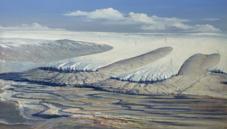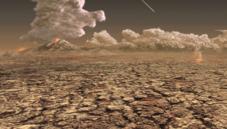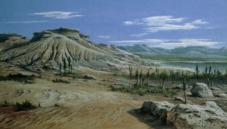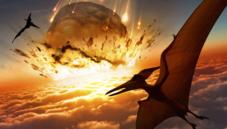_ _ _ _ _ __ _ the Cretaceous-Tertiary (or K-T) extinction event is the most well-known because it wiped out the dinosaurs, a series of other mass extinction events has occurred _ _ _ _ _ _ _ _ _ _ the history of the Earth, some even more _ _ _ _ _ _ _ _ _ _ _ than K-T. Mass extinctions are periods in Earth's history when _ _ _ _ _ _ _ _ _ _ large numbers of species die out _ _ _ _ _ _ _ _ _ _ _ _ _ _ or within a limited time frame. The most severe occurred at the end of the Permian period when 96% of all species _ _ _ _ _ _ _ _ . This along with K-T are two of the Big Five mass extinctions, each of which wiped out at least half of all _ _ _ _ _ _ _ . Many smaller scale mass extinctions have occurred, indeed the _ _ _ _ _ _ _ _ _ _ _ _ _ of many animals and plants at the _ _ _ _ _ of man in prehistoric, historic and modern times will eventually show up in the _ _ _ _ _ _ record as mass extinctions. Discover more about Earth's major extinction events _ _ _ _ _ _ .
Check:
Although the Cretaceous-Tertiary (or K-T) extinction event is the most well-known because it wiped out the dinosaurs, a series of other mass extinction events has occurred throughout the history of the Earth, some even more devastating than K-T. Mass extinctions are periods in Earth's history when abnormally large numbers of species die out simultaneously or within a limited time frame. The most severe occurred at the end of the Permian period when 96% of all species perished. This along with K-T are two of the Big Five mass extinctions, each of which wiped out at least half of all species. Many smaller scale mass extinctions have occurred, indeed the disappearance of many animals and plants at the hands of man in prehistoric, historic and modern times will eventually show up in the fossil record as mass extinctions. Discover more about Earth's major extinction events below.






No comments:
Post a Comment